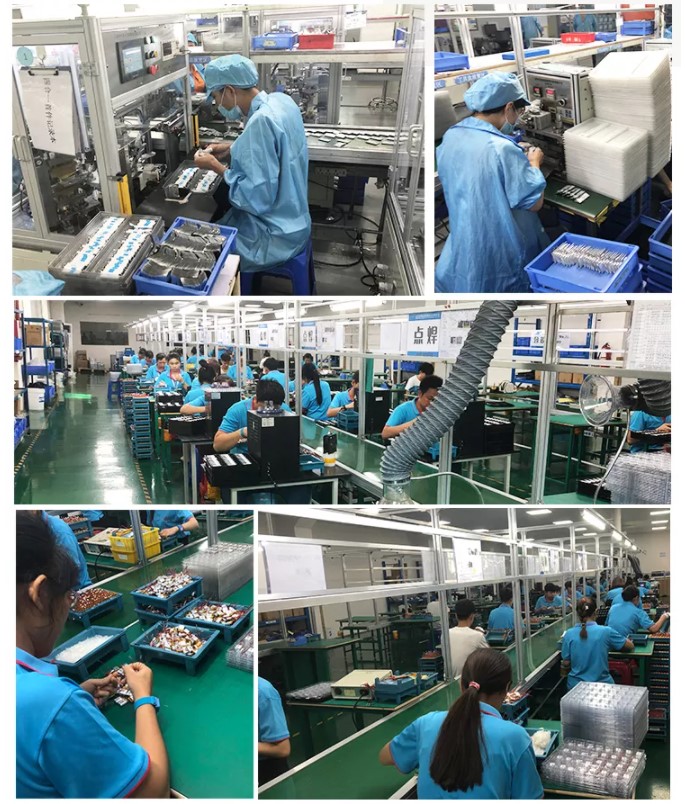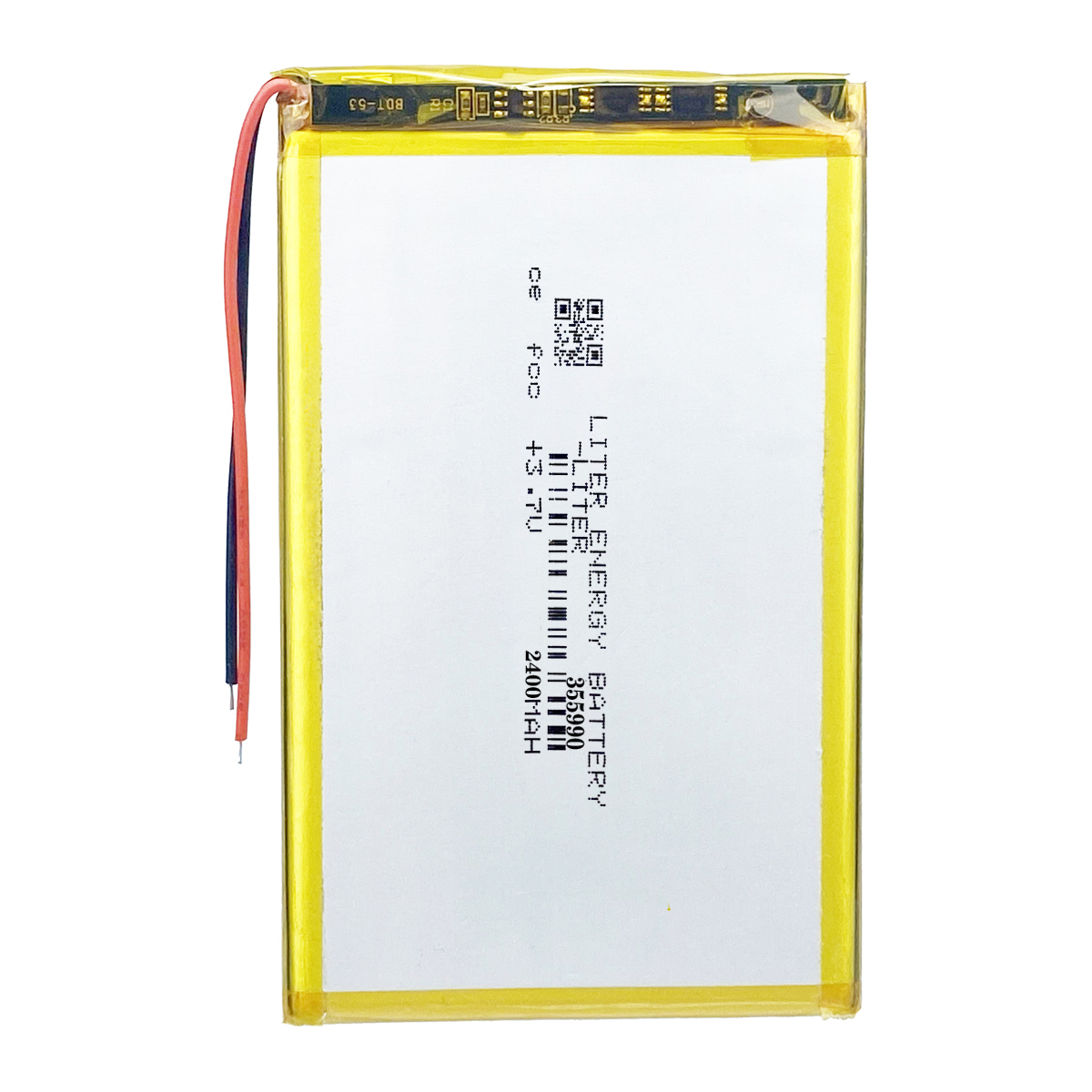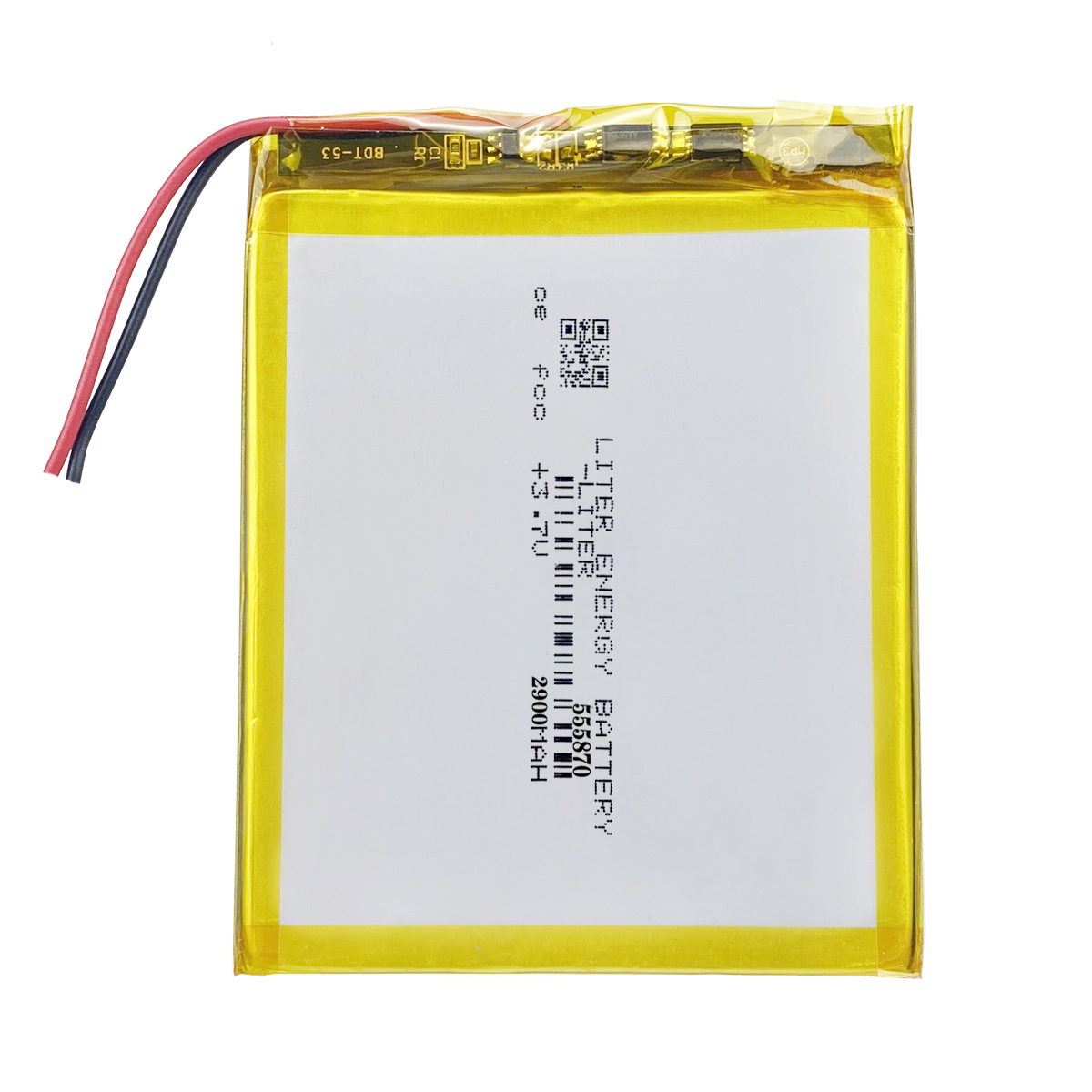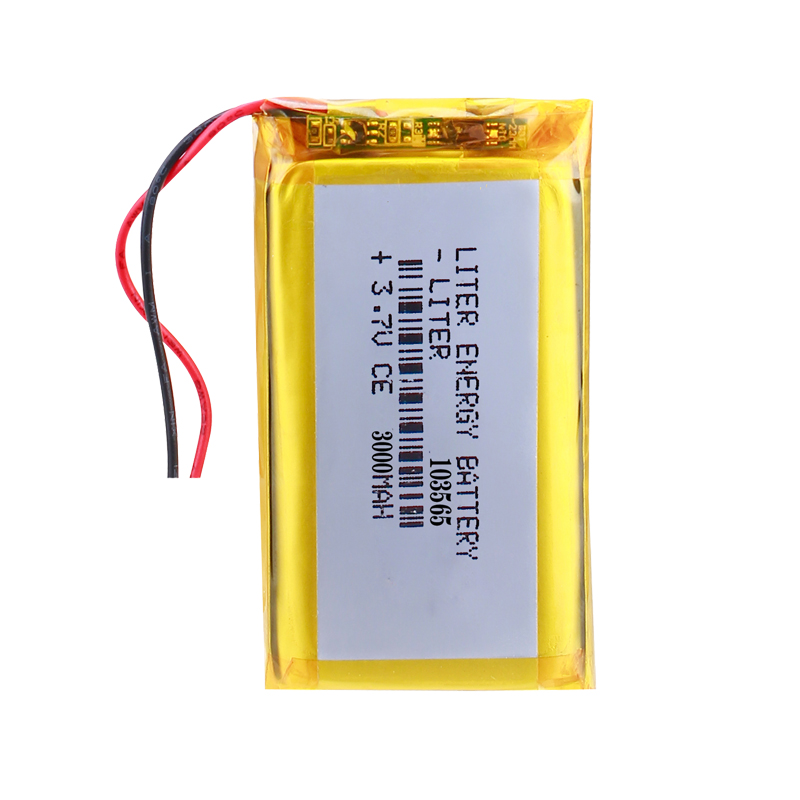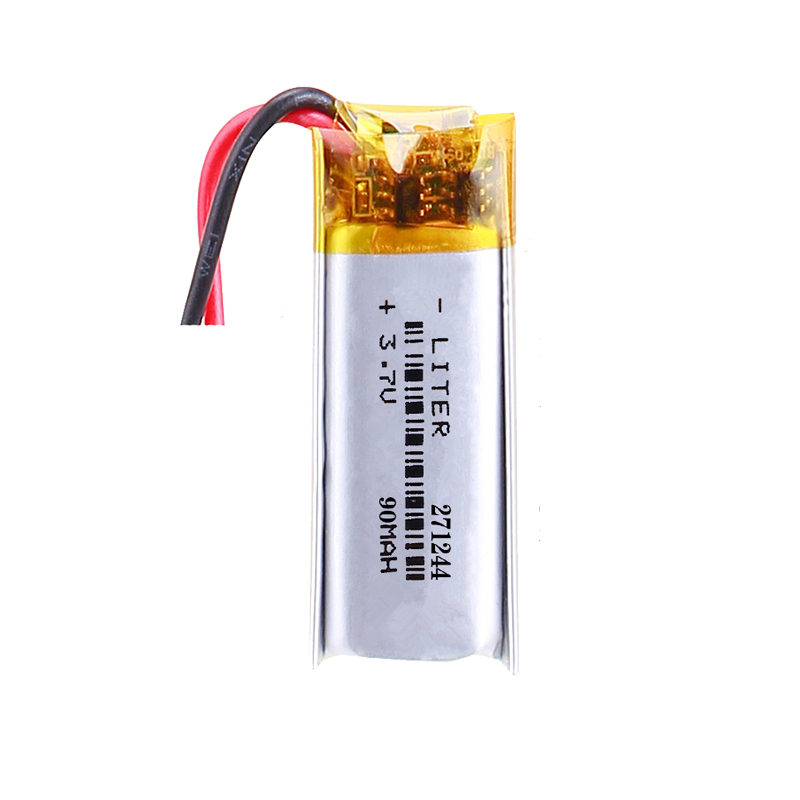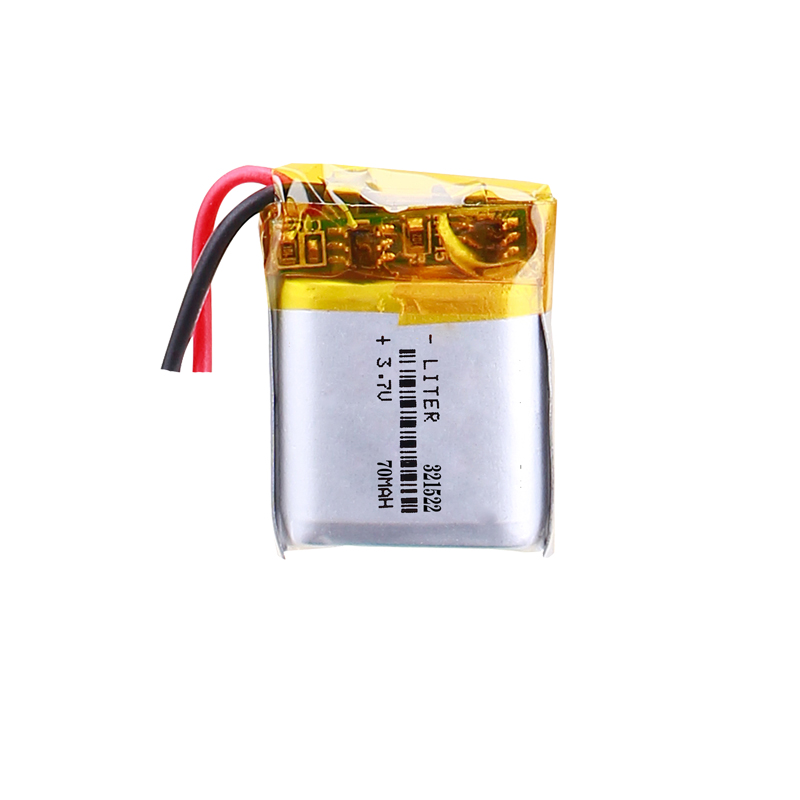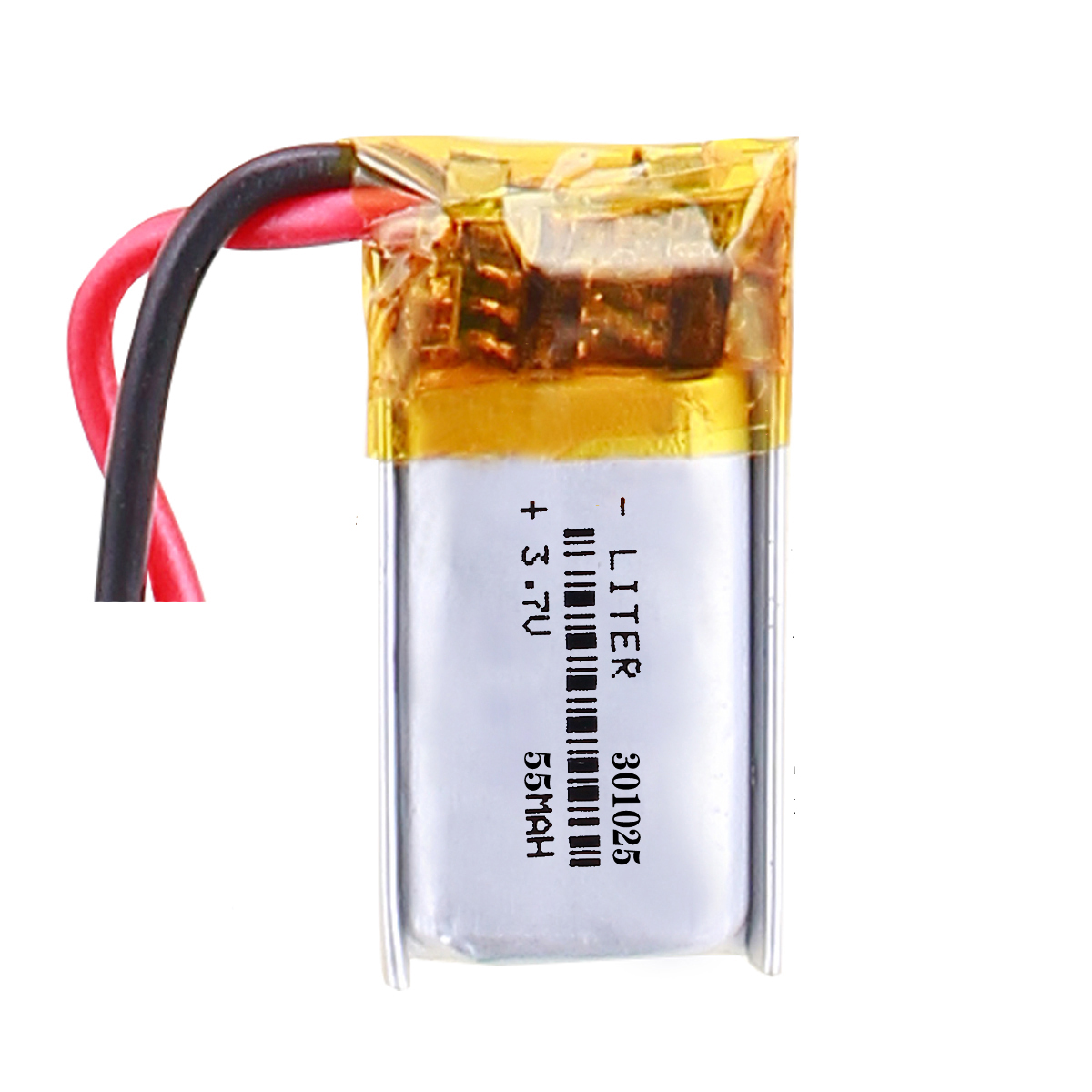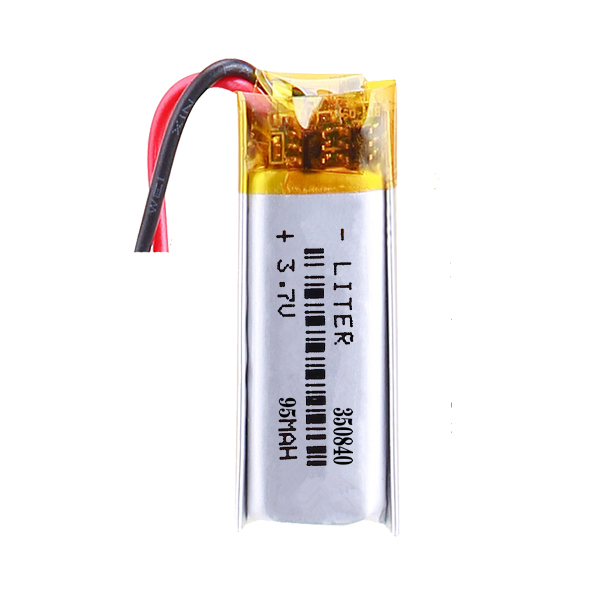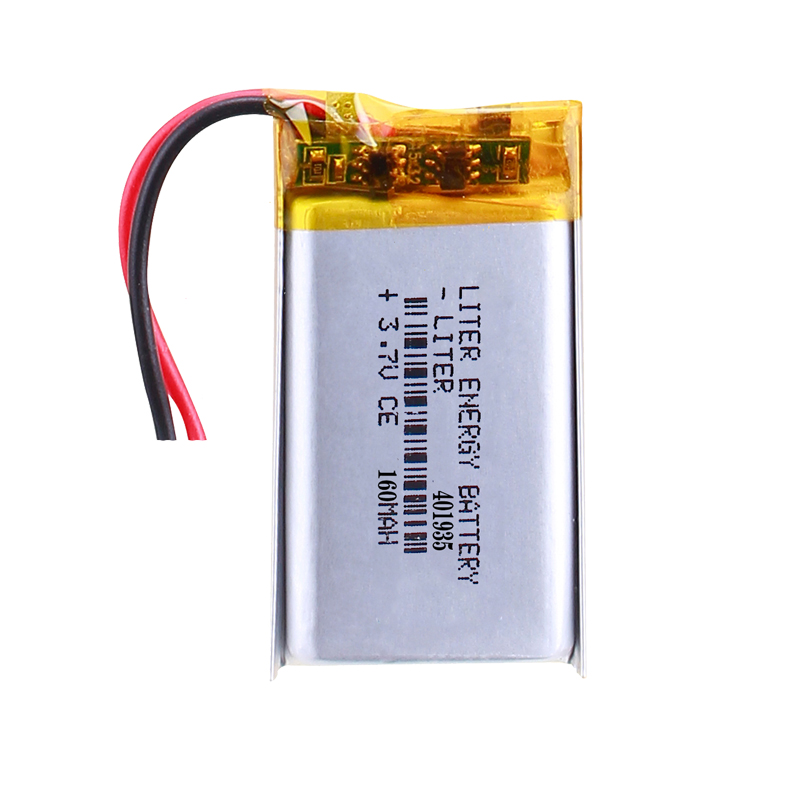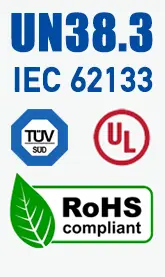Contact us
BIHUADE is a Leading 3.7V Rechargeable LiPo Batteries Manufacturer, Over 30 Years of Rechargeable LiPo Batteries Expert, Competitive Price with High Quality, Flexible Dimensions High Energy Density, Accept small sample order & custom dimensions, Leading Designer and Manufacturer from China in Lithium-Ion Polymer Battery Cell & Packs, with OEM & ODM Great Services.
Leave your requirement in the below footer box, we will reply within 12 hours.
We have thousands of models with LiPo batteries in stock, we can not put every model on our website and inventory changed every day, pls contact us before your consideration, we can offer you the recommendation.
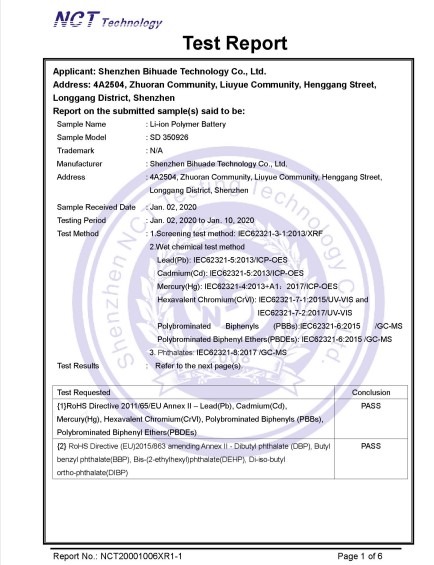
Material Safety Data Sheet
For BIHUADE BATTERY CO., LTD.
Lithium Ion Polymer Battery
Model/type reference………………..: LP452050
Trademark…………………………….: N/A
Nominal Voltage………………………: 3.7V
Typical Capacity………………………: 400mAh, 1.48Wh
Weight………………………………….: 8.0g
L: 50.0mm
Shape and Physical Dimension
(mm)…………………………………….: W: 20.0mm
T: 4.5mm
Version number………………………..: V1.0
Preparation Date………………………: May, 12, 2017~May 22, 2017
Revision date…………………………..: May 22, 2017
_____________________________________________________________________________
IDENTIFICATION OF THE SUBSTANCE/PREPARATION AND OF THE COMPANY/UNDERTAKING
Recommended use of the chemical and restrictions on use
Recommended Use: Used in portable electronic equipments;
Uses advised against:
a)Do not dismantle, open or shred secondary cells or batteries.
b)Do not expose cells or batteries to heat or fire. Avoid storage in direct sunlight.
c)Do not short-circuit a cell or a battery. Do not store cells or batteries haphazardly in a box or drawer where they may short-circuit each other or be shore-circuited by other metal objects.
d)Do not remove a cell or battery from its original packaging until required for use.
e)Do not subject cells or batteries to mechanical shock.
f)In the event of a cdll leaking, do not allow the liquid to come in contact with the skin or eyes. If contact has been made, wash the affected area with copious amounts of water and seek medical advice.
g)Do not use any charge other than that specifically provided for use with the equipment.
h)Observe the plus(+) and minus(-)marks on the cell, battery and equipment and ensure correct use.
i)Do not use any cell or battery which is not designed for use with equipment.
j)Do not mix cells of different manufacture, capacity, size or type within a device.
k)Battery usage by children should be supervised.
I)Seek medical advice immediately if a cell or a battery has been swallowed.
m)Always purchase the battery recommend by the device manufacturer for the equipment.
n)Keep cells and batteries clean and dry.
o)Wipe the cell or battery terminals with a clean dry cloth if they become dirty.
p)Secondary cells and batteries need to be charged before use. Always use the correct charger and refer to the manufacturer’s instructions or equipment manual for proper charging instructions.
q)Do not leave a battery on prolonged charge when not in use.
r)After extended periods of storage, it may be necessary to charge the discharge the cells or batteries several times to obtain maximum performance.
s)Retain the original product literature for future reference.
t)Use only the cell or battery in the application for which it was intended.
u)When possible, remove the battery from the equipment when not in use.
v)Dispose of properly.
2. HAZARDS IDENTIFICATION
Classification
No harm at the normal use. If contact the Electrolyte liquid in the Li-ion Battery, reference as follows:
Classification of the substance or mixture
Classification according to GHS
Acute Toxicity, Oral(Hazard category 4)
Acute Toxicity, Dermal(Hazard category 3)
Skin, irritate(Cagegory 1B)<
Certificated RoHS LiPo Batteries
The Restriction of Hazardous Substances Directive 2002/95/EC (RoHS 1), short for Directive on the restriction of the use of certain hazardous substances in electrical and electronic equipment, was adopted in February 2003 by the European Union.
The RoHS 1 directive took effect on 1 July 2006 and is required to be enforced and become a law in each member state. This directive restricts (with exceptions) the use of ten hazardous materials in the manufacture of various types of electronic and electrical equipment. It is closely linked with the Waste Electrical and Electronic Equipment Directive (WEEE) 2002/96/EC (now superseded) which sets collection, recycling and recovery targets for electrical goods and is part of a legislative initiative to solve the problem of huge amounts of toxic electronic waste.
Each European Union member state will adopt its own enforcement and implementation policies using the directive as a guide.
RoHS is often referred to as the “lead-free directive,” but it restricts the use of the following ten substances:
Lead (Pb)
Mercury (Hg)
Cadmium (Cd)
Hexavalent chromium (Cr6+)
Polybrominated biphenyls (PBB)
Polybrominated diphenyl ether (PBDE)
Bis(2-ethylhexyl) phthalate (DEHP)
Butyl benzyl phthalate (BBP)
Dibutyl phthalate (DBP)
Diisobutyl phthalate (DIBP)
Caution! – LiPo Batteries
In order to prevent the LiPo Battery possibly occurs leaks, over heat, swollen, please note the preventive measure.
Handling Precautions and Guideline:
1.
When charge please select the LiPo Battery special battery charger.
2.
Strictly prohibits inverting the cathode use LiPo Battery.
3.
Strictly prohibits directly connect LiPo Battery to power source plug
4.
Please do not throw the LiPo Battery to water or put into heater
5.
Strictly prohibits plunging the LiPo Battery in sea water or water, when LiPo Battery do not use, please store LiPo Battery in the cool-dry environment.
6.
The prohibition in strong static electricity and strong magnetic field place use, otherwise is easy to destroy the LiPo Battery PCBA
7.
The prohibition puts the LiPo Battery nearby the hot high temperature source, like the fire, the heater and so on use and leaves alone
8.
The prohibition directly connects the LiPo Battery cathode with the metal to short-circuit.
9.
The prohibition rap or throws, steps on the LiPo Battery and soon
10.
Forbids directly to weld the LiPo Battery and pierces the LiPo Battery with the nail or other sharp weapons
11.
If the LiPo Battery sends out the unusual smell, gives off heat, the distortion or appears any exceptionally, immediately moves the LiPo Battery from the installment or the LiPo Battery charger to and stops using
12.
If the LiPo Battery occurs leaks, the electrolyte enters eye, please do not have to rub scratches, the application clear water flushing eye, and delivers the medical treatment otherwise to be able immediately to injure the eye
13.
When LiPo Battery long-term storage, or assembly in the host, suggest customer should take every 6months carry on one time charge and discharge and recharge it to half charge state (3.7-3.9V)(the method: 0.2CmA charge and discharge)
14.
Abandon the LiPo Battery to wrap up the electrode using the insulating paper, prevented the LiPo Battery short-circuits
15.
Do not decompose the LiPo Battery
16.
Keep small LiPo cells and LiPo Batteries which are considered swallowable out of the reach of children
17.
Swallowing may lead to burns, perforation of soft tissue, and death. Severe burns can occur within 2 h of ingestion
18.
In case of ingestion of a LiPo cell or LiPo Battery, seek medical assistance promptly.
355990 2400mAh Standard LiPo Battery with connector JST PHR-2 A
Model 355990 2400mAh Standard LiPo Battery with connector JST PHR-2 AType3.7V Standard LiPo Battery...
555870 2900mAh Standard LiPo Battery with connector FPCB
Model 555870 2900mAh Standard LiPo Battery with connector FPCBType3.7V Standard LiPo BatteryCapacit...
3.7V 103565 3000mAh Standard LiPo Battery with connector two pairs wires two connectors
Model3.7V 103565 3000mAh Standard LiPo Battery with connector two pairs wires two connectorsType3....
271244 90mAh 3.7V Rechargeable LiPo Battery Batteries
271244 90mAh 3.7V Rechargeable LiPo Battery BatteriesBattery Type 271244 90mAh 3.7V Rechargeable ...
321522 70mAh 3.7V Rechargeable LiPo Battery Batteries
321522 70mAh 3.7V Rechargeable LiPo Battery BatteriesBattery Type 321522 70mAh 3.7V Rechargeable ...
301025 55mAh 3.7V Rechargeable LiPo Battery Batteries
Model 301025 55mAh 3.7V Rechargeable LiPo Battery BatteriesType3.7V LiPo batteryCapacity55mAh LiPo ...
350840 95mAh 3.7V Rechargeable LiPo Battery Batteries with connector JST ACHR-03V-S B
Model 350840 95mAh 3.7V Rechargeable LiPo Battery Batteries with connector JST ACHR-03V-S BType3.7V...
401935 1.5A 160mAh 3.7V Rechargeable LiPo Battery Batteries
Model 4019035 1.5A 160mAh 3.7V Rechargeable LiPo Battery BatteriesType3.7V LiPo Battery Batteries...
